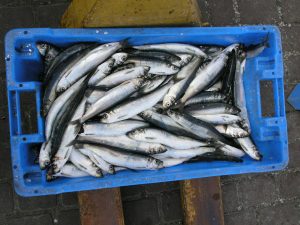Indonesia’s Seafood Export Strategy to the U.S. in the Post-“Trump Tariff” Era

Indonesia’s seafood industry remains one of the country’s leading export sectors, playing a crucial role in the national economy. The United States is a primary export destination, especially for products like frozen shrimp, tuna, squid, cuttlefish, and octopus. In the first half of 2024, Indonesia’s seafood exports to the U.S. reached USD 889.39 million, with shrimp alone accounting for nearly 28% of that total. These products currently benefit from highly favorable market access, as most enter the U.S. either duty-free or at extremely low tariff rates—averaging just 0.8%. Moreover, Indonesia has successfully met international food safety and quality standards, positioning itself as a trusted global seafood supplier.
A closer look at export data for Indonesian seafood to the U.S., classified by 6-digit HS codes over recent years, reveals several notable trends. First, products under HS code 030623 (shrimp and crabs) and 030721 (clams) consistently post high export values and continue to grow. This reflects strong demand in the American market. For instance, shrimp and crab exports rose from USD 120 million in 2020 to USD 150 million in 2023, signaling that U.S. buyers are increasingly receptive to these Indonesian products.
Additionally, fillet products—specifically fresh or chilled tilapia (HS 030410) and frozen cod (HS 030420)—have shown encouraging export performance. The growth in value, such as tilapia fillets increasing from USD 60 million in 2020 to USD 75 million in 2023, indicates strong potential for both fresh and frozen fish fillets in the U.S. market.
Overall, the data highlights a sustained high demand for Indonesian seafood in the United States, particularly for shrimp, crab, and fish fillets. This suggests ample room for Indonesia’s fisheries sector to continue expanding its footprint in the American market. To capitalize on this opportunity, industry stakeholders should focus on boosting production capacity, enhancing product quality, and strengthening distribution networks across the U.S.
However, if the U.S. imposes a blanket import tariff of around 30% on seafood products from all countries—including Indonesia—the trade landscape could shift dramatically. In terms of relative competitiveness, Indonesia wouldn’t be immediately disadvantaged, as key competitors like Vietnam, India, and Ecuador would also face the same tariff. This would level the playing field, making export success more dependent on product quality, cost efficiency, and the strength of long-term business relationships with American partners. In such a scenario, nations with the most efficient production and logistics systems stand a better chance of maintaining or even expanding their market share.
That said, from an absolute perspective, a 30% tariff hike would likely dampen overall U.S. demand for imported seafood. Higher retail prices driven by the tariffs could lead American consumers to cut back on seafood purchases or switch to domestic or alternative products. As a result, U.S. importers might significantly reduce their order volumes, leading to a steep drop in Indonesian exports. In the medium term, this could cause inventory surpluses, falling domestic prices, and a slowdown in income and activity across Indonesia’s seafood sector.
To mitigate these risks, Indonesia’s fisheries industry must remain agile—diversifying its markets, investing in cost-saving technologies, and reinforcing trade diplomacy efforts to maintain access to key global markets like the United States.





